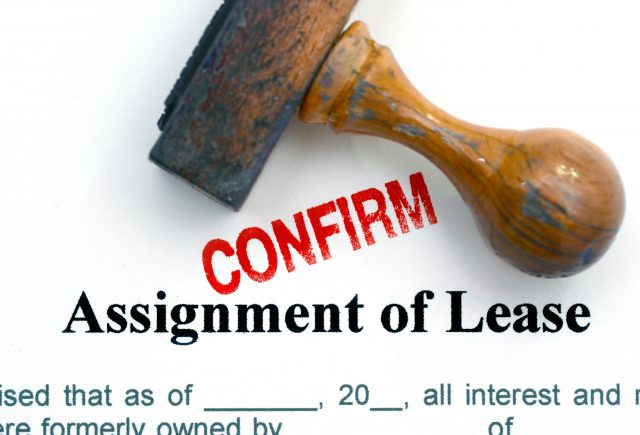A Full Guide to Commercial Lease Assignment (Lease Transfer)

Dealing with a fixed-term lease agreement and looking to move offices or downsize? The topic of commercial lease transfer can be confusing to navigate, particularly when you are unsure of your rights and obligations under the lease.
If you’re renting a commercial property, you signed a contract at the beginning of your tenancy called a lease agreement, which contains all the details of your rights and obligations while occupying and conducting business operations at the commercial property. Your agent is required by law to give you a copy of the lease agreement if you don’t already have one.
The following article will serve as a full guide to commercial lease assignment, providing business owners with an overview of the legal considerations and elements required for an assignment of lease.
Contents
- 1 What is a Commercial Lease Assignment?
- 2 Current Market Conditions Boosting Lease Transfers and Flexible Arrangements
- 3 What is the Difference Between Commercial Lease Assignment and Subleasing?
- 4 Why Would You Want to Transfer a Lease?
- 5 How to Go About Transferring Your Commercial Lease
- 6 Important Things to Keep in Mind
- 7 Wrapping up
What is a Commercial Lease Assignment?
Also known as a lease transfer, a commercial lease assignment involves a tenant transferring all of their interests and rights in a lease to a new party. This new tenant will take on the responsibilities of the existing lease, including rent and any other obligations, leaving the original tenant free to exit the agreement.
Commercial lease assignment often occurs when tenants want to leave their commercial property prior to the end of a fixed-term agreement. This often happens when a business quickly needs to upsize or downsize their space, move to a new city, or go out of business.
State law dictates whether tenants require their landlord’s consent prior to transferring a lease or subletting a part of their space. However, most lease agreements will clearly outline full transfer provisions prior to being signed and, whilst it is possible for lease assignment to be forbidden, the vast majority of agreements allow for transfers.

Current Market Conditions Boosting Lease Transfers and Flexible Arrangements
There has been a marked increase in the number of lease transfers and sublets of commercial properties in recent years, largely as a result of increased instances of remote work and downsizing seen across multiple industries. This reduced need for workspace has persisted, as many workers have continued to show a preference for remote and hybrid work arrangements if and when suitable.
Changing employee priorities have forced many businesses to reconsider their existing lease agreements, resulting in an increase in both commercial lease assignments and sublease agreements.
Landlords have adapted their offerings in the face of this changed market demand. Many are now offering flexible, month-to-month leases, allowing tenants to rest easy knowing that they won’t be stuck in a long-term lease agreement if their situation changes.
However, in the case of premium office spaces in highly sought-after locations or warehousing facilities close to major transport links, traditional leases are still very much the norm. In these cases, landlords may have realized that fully reconfiguring their offerings for flexible-usage is financially unrealistic. This may be due to a number of factors, including high-levels of existing demand for traditional leases, the saturation of the flexible workspace market, and the requirements of their typical target tenants.
So, if you’re leasing long-term commercial property and need out of the agreement, or at least to downsize, a lease transfer is a great solution that can leave all contracted parties satisfied.

What is the Difference Between Commercial Lease Assignment and Subleasing?
A commercial sublease, which is a type of lease transfer, occurs when a tenant who currently leases property agrees to let another tenant use the space concurrently. The agreement involves all three parties: the original tenant, the new tenant, and the property owner.
When you sublease your space, you become the sub-lessor (or sub-landlord), and your new tenant is now the sublessee (or subtenant). Your agreement with them will normally allow them to reside in your space – or a specified portion of it – for either the remaining term of your lease or some other pre-determined length of time.
It’s important to keep in mind that, as the original lessee, you’re still liable and responsible for making monthly lease payments on a sublet agreement. Therefore, you must collect rent from your subtenant each month while continuing to make rental payments directly to your landlord.

Why Would You Want to Transfer a Lease?
Lease transfers can be done to adjust the leased property size and monthly rent. A business owner may decide that they need to upsize or downsize their leased premises prior to the end of their original lease term.
Also, a lease transfer may be sought because the current tenant wants to vacate the rental property entirely, with no plans to lease elsewhere. This may be due to outside factors (e.g. a global pandemic) or the forced closure of a business.
A lease transfer, or a sublease arrangement, may also be desired so that two businesses with complementary strengths can share a workspace and mutually benefit from their operational proximity. No matter how complementary the proposed new tenant is to the existing tenant, this new business relationship will require the landlord’s permission (unless they have been given prior written consent providing them with sole discretion over subletting)
How to Go About Transferring Your Commercial Lease
The only necessary requirement for lease transfer is to identify a new lessee. In the vast majority of cases, your landlord cannot deny your request for a lease transfer unreasonably, yet it’s still in your best interest to find a new tenant with an established rental history and who can financially afford the rent on time. The only situation in which a commercial landlord can instantly deny a lease transfer request is if this provision was established in the initial lease agreement, however, this type of provision will often scare off prospective tenants.
If you’re looking to transfer your lease, most agents will request that the new tenant apply as if they were renting any other property as a primary lessee. Be sure that, in addition to their application, the prospective tenant provides documentation like company financials and past rental receipts to support your transfer request. This way, there’s no doubt of their ability to be a reliable tenant.
If you wish to transfer your lease, you must have written consent from your landlord – mere verbal agreement will not suffice. Without your landlords’ express permission in writing, any attempted transfer of lease will be considered null and void. You will then need to fill out a lease assignment agreement, outlining the proposed assignee, current tenant, landlord, and existing lease term.

Important Things to Keep in Mind
To avoid any unnecessary stress or surprises, it helps to understand your rights and responsibilities before beginning the commercial lease transfer process.
Goals and obligations of the original lessee and new tenant
When considering a lease transfer, it is crucial to first identify the goal you hope to achieve through this deal. Most commercial leases have restrictions on transferring the lease, so before beginning any negotiations, all rights and obligations of the involved parties must be closely analyzed. If everyone’s interests are clear from the start, then agreement upon terms should run much more smoothly.
Starting date of lease assignment
In most cases, tenants need to pay their rent a month before move-in date. Confirm that the party being assigned the lease understands when they are responsible for making their first rent payment, so there are no delayed payments. This is also important for sublease agreements, because existing tenants are often liable for any missed rental payments made by the sublessee.
Pitfalls and consequences
Depending on the terms of the lease transfer and the legal documentation, the original lessee may find themselves responsible for any actions or defaults of the new leaseholder.
As commercial leases often last several years, this could result in a heavy financial burden and significant legal consequences. Careful negotiation at the outset will always lead to a more positive outcome, so it’s important to tick all appropriate procedural and legal boxes when pursuing a commercial lease assignment.

Wrapping up
Before you begin subletting or transferring/assigning a lease, be sure that you understand the objectives of both parties and identify the correct method of altering the lease. Both lessors and lessees should also review all clauses in the lease and negotiate based on everyone’s incentives and interests. If there is any confusion about preparing or reviewing documents related to this process, it’s important to consult with legal advisors for the sake of all parties concerned.
Further Insights
Looking for more articles about the US office market and general office matters? You can find a number of recent posts below! Alternatively, if you’re a business or freelancer looking for flexible workspace in the US, we can help to connect you to a wide range of serviced offices and coworking spaces in highly sought-after locations such as New York City, Los Angeles, Houston, Atlanta, Miami, Chicago, and Dallas. You can also call us to have a discussion about your requirements on 972-913-2742.
Miami Office Market Report | Q2-Q3 2022
Mid-2022 Las Vegas Office Market Report
The Impact of Proptech on Commercial Real Estate
15 In-Person Employee Recognition Ideas for the New World of Work
Mid-2022 Houston Commercial Real Estate Market Report
Coworking Space for Students on U.S. College Campuses
How the Decentralization of Cities Has Changed the U.S. Office Space Market
US Office Market Trends 2022 – Statistics, Challenges and Outlook
January 2022 – U.S. National Office Market Report
The Great Resignation or the Great Retention? How Employers Yield the Power Heading into 2022
5 Ways to Create a Great Office Culture